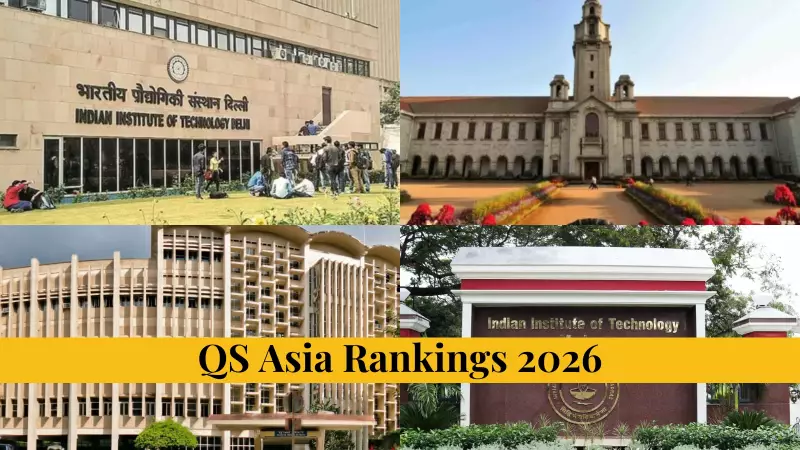
The recently released QS Asia University Rankings for 2026 have delivered sobering news for India's higher education sector, with the country's prestigious IITs witnessing notable declines while institutions from China and Singapore demonstrate remarkable upward mobility.
Indian Institutes Struggle to Maintain Footing
India's representation in the top tier of Asian universities has faced significant challenges this year. The Indian Institute of Technology (IIT) Bombay, traditionally India's highest-ranked institution, has slipped out of the coveted top 40 positions. Similarly, IIT Delhi has fallen out of the top 50, marking a concerning trend for the nation's premier engineering institutions.
Despite these setbacks, India maintains a strong numerical presence in the rankings with 96 institutions making the list. However, the quality of placements remains a pressing concern for educational policymakers.
Chinese Dominance and Singapore's Remarkable Rise
The rankings tell a different story for East Asian institutions. Peking University has retained its crown as Asia's top university for the second consecutive year, while the National University of Singapore (NUS) has made an impressive leap to claim the second position.
Chinese universities have demonstrated exceptional performance, with Tsinghua University, Zhejiang University, and Fudan University all securing positions within the top 10. This consolidation of Chinese institutions at the pinnacle of Asian higher education highlights the country's sustained investment in academic excellence.
Key Factors Behind the Shifting Rankings
Several critical metrics have contributed to the changing landscape:
- Research Impact: Chinese and Singaporean universities have shown superior performance in citations per paper and research productivity
- Internationalization: Institutions from Singapore and Hong Kong continue to excel in attracting international faculty and students
- Academic Reputation: Peer assessment scores have favored universities with strong global partnerships and industry collaborations
- Employer Perception: Graduate employability and industry connections have become increasingly important differentiators
Silver Linings for Indian Higher Education
While the overall picture appears challenging, several Indian institutions have shown resilience. The University of Delhi and Anna University have maintained stable positions, while some newer IITs have shown promising improvements in specific metrics.
Experts suggest that increased international collaborations, focused research investments, and curriculum modernization could help Indian universities regain lost ground in future rankings.
The 2026 QS Asia Rankings serve as both a warning and an opportunity for Indian higher education. As global competition intensifies, strategic reforms and sustained investment will be crucial for maintaining India's position in the rapidly evolving Asian educational landscape.





